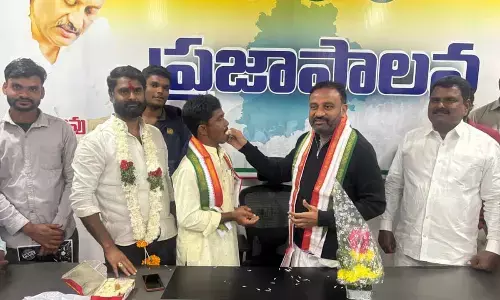From Tagore to Ayodhya, South Korea shares deep Indian links

Back in April 1920 when Korea was under Japanese occupation, one of its oldest newspapers - 'The Dong-A Ilbo' that has a vibrant press museum now - took birth.
Back in April 1920 when Korea was under Japanese occupation, one of its oldest newspapers - 'The Dong-A Ilbo' that has a vibrant press museum now - took birth.
On the pages of its first four-page edition was a beautiful poem by Nobel laureate Rabindranath Tagore, calling Korea the 'Lamp of the East' - words that gave hope to an East Asian country that few knew would become synonymous with success.
The short quatrain reads: "In the golden age of Asia, Korea was one of its lamp bearers, and that lamp is waiting to be lit once again, for the illumination of the East."
Tagore's words remind one of the troubled, colonial past both Korea and India share, at the hands of different rulers. The India link of South Korea has interesting stories to tell about its own history.
During a walk through the beautiful Gyeongbokgung Palace - the last-standing bastion of any Korean royal dynasty and a popular hotspot - in the South Korean capital, a well-informed guide is sure to tell its Indian visitors how this link begins in Ayodhya.
As per the urban legend, the queen from Hindu God Lord Rama's birthplace married a king in the overseas land of Korea.
It is said that close to 10 per cent Koreans trace their roots back to this royal couple. Her two accompanying brothers might also have played a role in the country's Buddhism.
Last year, the South Korean first lady Kim Jung-sook, wife of President Moon Jae-in, was in Ayodhya to kick-start a memorial park that marks these ancient ties.
Korean and Indian languages like Tamil and Sanskrit share deep links too. It is not uncommon to find Korean children calling their parents 'amma' and 'appa'.
Two universities here also teach Hindi as a language, but none of the three major ones -- Seoul National University, Korea University and Yonsei University - do.
The country is predominantly Christian and a stunning 50 per cent don't affiliate to any religion. But a Buddhist temple stands right in the middle of Seoul.
The Gilsangsa temple, earlier a high-end restaurant, has now been transformed into a sacred space with its own 'Peomjong' (Dharma bell) and halls for chanting.
"South Korea is 70 per cent mountainous. Most Buddhist temples in Korea are in the countryside, but this one is in the city. The religion, originating in India, has also adapted to each country it has gone to. In Korea, it is influenced from Confucianism," one of Gilsangsa's fifteen bhikkhus, monk Gudam, said.
Once ravaged by colonial subjugation and the Korean war (1950-53) that divided it from its northern counterpart - they still remain separated by the highly-militarised borders of the world - the DMZ or De-Militarised Zone that doubles up, for some part, as a tourist must-see on the Southern side -- South Korea has managed to upend its fortune.
During the bloody war, still written in the history of both Koreas as a dark period, Indians gave medical assistance and a custodian force for Prisoners of War (PoWs) is still recognised.
Cut to the modern times, South Korea has entered the '30-50 Club', becoming one of the just seven nations where each has a per capita gross national income (GNI) of over $30,000 and a population over 50 million.
In a few decades after its independence in 1945, South Korea has also flooded global markets with its domestic strengths. Most notable are Samsung, Hyundai Motors and Kia Motors.
Last year, India-South Korea trade amounted to $20 billion. Its trade with other countries has skyrocketed, making it one of the world's most developed and high-income countries.
A symbol of South Korean economic prosperity is the Lotte World Tower, a nearly 500-metre high skyscraper - tallest in the country and fifth tallest in the world - that wows visitors with its amazing views of Seoul, its green cover, enviable roads, Han river and, well, more skyscrapers.
A cultural delight, 'The Land of the Morning Calm' currently sees around one lakh Indian visitors per year, with this number rising each year, for good reason. For Indians, one of them is lessons in punctuality!
(The writer was in South Korea on an invitation from the Korea Foundation)


















